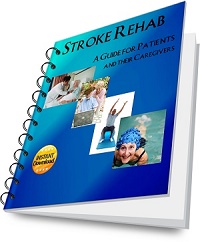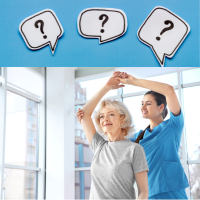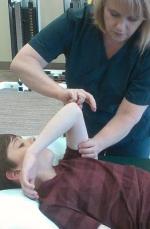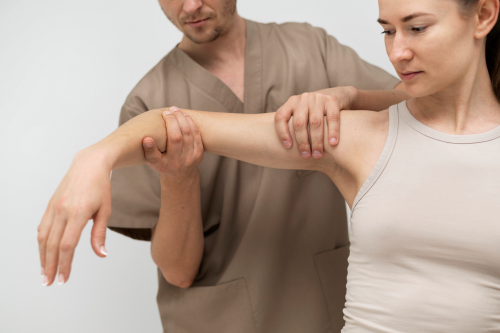Submissions from Readers
Shouting, Confusion, and Anger After Stroke
by Stacey
(Zimbabwe)
Question from reader: My mom had a stroke about a month ago. Physically she is improving, but she has bouts of anger, confusion (says weird things), and times when she just shouts and screams. Her stroke was on the right side of the brain. Is this normal?
Answer from Stroke-Rehab.com: It's not uncommon for individuals who have experienced a stroke, especially on the right side of the brain, to experience emotional and behavioral changes including anger, confusion, emotional outbursts, and difficulty with communication. Emotional lability or exaggerated changes in mood are often observed by caregivers.
The right side of the brain is responsible for many aspects of social and emotional functioning, as well as understanding and processing nonverbal cues. When the right side of the brain is affected by a stroke, it can disrupt these functions, leading to a range of emotional and behavioral symptoms.
Each person's experience can be unique, and the extent and type of emotional and behavioral changes can vary widely. These symptoms may or may not be permanent and can improve over time as the brain heals.
You will need to have patience with your mother, and you can gently remind her that a stroke can cause one to become overly emotional. You might suggest some remedies to help her manage her emotions and promote relaxation. These may not all be appropriate for your mother (you can check with her physician), but some techniques include:
Deep Breathing Exercises: Inhaling slowly through the nose and exhaling through the mouth can help calm the nervous system and reduce emotional distress.
Progressive Muscle Relaxation: This technique involves tensing and then relaxing different muscle groups to promote physical and mental relaxation. It can help reduce tension and anxiety associated with emotional lability.
Guided Imagery: Guided imagery involves visualizing peaceful and calming scenes. This exercise can help redirect the focus away from overwhelming emotions and towards positive mental imagery.
Chair Yoga or Gentle Stretches
Walking: Taking regular walks outdoors can have a positive impact on mood and emotional well-being. Walking can help reduce stress and anxiety while promoting physical activity.
Art Therapy: Engaging in creative activities like drawing, coloring, or painting can provide a therapeutic outlet for emotional expression and help alleviate distress.
Listening to Music: Playing calming music or soothing sounds can promote relaxation and shift focus away from intense emotions.
Journaling: Writing down thoughts and feelings in a journal can provide an outlet for emotional expression and help one gain insight into their emotions.
Social Support: Engaging in conversations with supportive friends, family members, or support groups can provide emotional comfort and an outlet for sharing feelings.
Aromatherapy: Certain scents, like lavender or chamomile, are known for their calming effects. Using essential oils or scented candles during relaxation exercises can enhance their effectiveness.
Remember that the exercises should be adapted to your mom's abilities and preferences. It's also important to consult with a healthcare professional before starting any new exercise routine to ensure that the activities are safe and appropriate for their specific condition and stage of recovery.
If her symptoms persist or are interfering with her daily life, I would suggest consulting with her MD or a neuropsychologist.
Treatment Tips from Others
To see tips from other survivors and caregivers about their treatment recommendations, click here.
Newsletter Sign Up
Receive Stroke Recovery Tips, our online quarterly newsletter. Sign up below for free tips on exercises, resources, latest technology, apps, research and more!
To view past issues of Stroke Recovery Tips, visit https://www.stroke-rehab.com/Stroke-Recovery-Tips-BackIssues.html
As an Amazon Associate I earn from qualifying purchases.
- Home
- Stroke Questions
- Shouting, Confusion, and Anger After Stroke
Recent Articles
-
How to Make Neuroplasticity Repeatable On Demand
Submission from reader: Neuroplasticity is widely touted as a way for stroke survivors to recover. To make it repeatable on demand, what exact signal is -
Only Plays Internet Games and Nothing Else Three Years Post Stroke
Question: I know playing games for up to 8 hours on the internet is not healthy for anyone. Does anyone know how sitting all day long playing games on -
Sadness After Stroke
I Get Sad Question:I get so sad at times like I lost the old me, I was very active and now I’m not, I’ve had a complete meltdown and just sobbed. Answer: -
More damage done to paralyzed left arm as a result of carelessness.
Question: My husband suffered a stroke which caused his entire left side with no feeling or movement. Recently, my husband possibly could have been turned -
Shouting, Confusion, and Anger After Stroke
Question from reader: My mom had a stroke about a month ago. Physically she is improving, but she has bouts of anger, confusion (says weird things), and -
Cloudy vision after stroke
Question: My mother had a stroke 1 yr ago. It caused partial loss of vision on her right side. During a 4 day road trip, her vision would get cloudy and -
Flaccid Paralysis After Stroke
Learn about stroke treatment for flaccid paralysis after stroke. -
Vision Problems After Stroke
Answers to patients' questions about vision problems after stroke and treatment. -
Symptoms Getting Worse After Stroke
If you experience sudden declines or changes after stroke, you should seek medical attention. -
Flaccid Paralysis Treatment After Stroke: Questions and Answers
Answers to questions about flaccid paralysis treatment after stroke including home exercises and treatment ideas.



